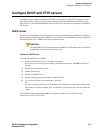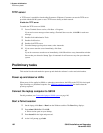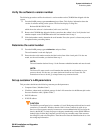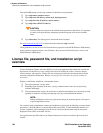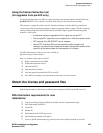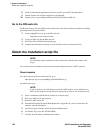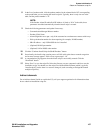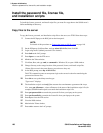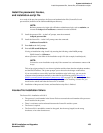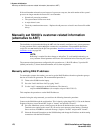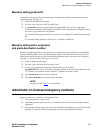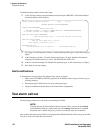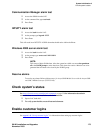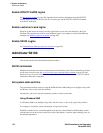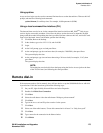
3System initialization
Install the password file, license file, and installation scripts
S8100 Installation and Upgrades 169
November 2003
Install the password, license,
and installation-script file
As a result of the previous procedure, the license and authentication files (licensefile.lic and
password.bin) should be in the //d/LucentPub/ftproot directory.
NOTE:
Business partners who login with a Windows administrator login, such as ntadmin, can
execute the loadpwd and loadlicense commands from the bash shell.
1 Install the password file – At the LAC prompt, enter the command:
loadpwd password.bin
2 Install the license file – At the LAC prompt, enter the command:
loadlicense licensefile.lic
3 Enter bash at the LAC prompt.
4 Enter cd //d/LucentPub/ftproot.
If using an installation script, install it by entering the following at the BASH prompt:
S8100-lucent3> ./<filename>
where <filename> is the name of the installation script’s file (for example, installscript.sh).
NOTE:
You need to use an installation script only if the customer has a maintenance contract with
Avaya.
This script assigns product ids, sets alarm origination and the alarm detection telephone numbers,
and the RAS IP address. The system prompts you to reboot for the changes to take effect.
If you were unable to successfully install the installation script in this step, you can set the
customer-related parameters manually as described in the following section, Manually set
S8100’s customer-related information (alternative to ART) on page 170. Wait until after you have
finished the manual procedure before rebooting. Also, if you are installing a license file, you
should wait to reboot until after the license file is installed.
5 Installation of the password, license, and installation-script files is finished.
License file installation failure
The license file’s installation will fail if:
• The processor’s serial number in the license file does not match the serial number of the processor
that is installed in the system.
• There is a software-version mismatch between the license file and the system.
• The license is expired.
• The license file is unreadable, cannot be decrypted, has the wrong length, has the wrong
checksum, or has other format errors.



